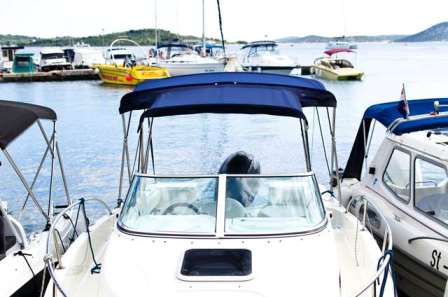- November 9, 2018
It's Time to Winterize Your Boat

As the temperatures begin to drop, it’s time to start thinking about next steps when it comes to your boat. The time and effort spent on the process of winterization will directly affect the boat’s performance, so protecting vessels properly is crucial. Come spring time, you will want a seamless transition back into the water!
Like many boating procedures, creating or referring to checklists can be helpful. In addition to completing all the tasks on the checklist, consulting the owner’s manual for manufacturer’s recommendations is an important practice as well. BoatSafe.com offers this useful checklist that outlines the top priorities for winterizing a boat including:
- Running the inboard engine(s) to warm it up and change the oil while it’s warm
- Thoroughly inspect the stern drive(s) and remove any plant life or barnacles
- How to flush out the outboard engine(s)
- Make sure the fuel tank is filled to avoid condensation or any other issues during the winter months
- Make sure the bilges are clean and dry
- How to handle the fresh water system
- How to pump out the head
- Check the interior; remove any valuables, electronics, lines, PFD, fire extinguishers, flares, fenders, etc.
- Procedures to take when the boat is held in out of water storage
- Procedures to take when the boat is held in water storage
The article also discusses places to store boats during the off-season. Keeping a boat out of the water, under cover, and in a climate-controlled area is best. Another option is shrink-wrapping the boat. If both these options don’t work for you, make sure the boat is well covered with a tarp or sturdy material. Additionally, if you are new to the winterization process, you should have someone who is experienced assist them or hire a professional. A mistake big or small—isn’t worth it! Before we get deeper into winter, check out our other boat winterization articles Winterizing Your Boat and Winterization Tips: Boat Storage.

